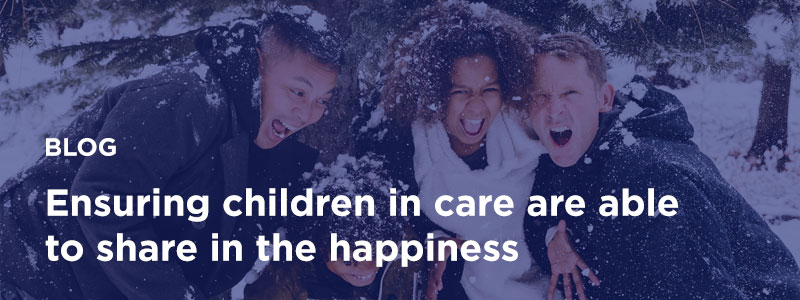Foster Care and the Holidays

There was a bit of good news in the most recent foster care data. The number of children in foster care nationally dropped by about 4.5% between September 2019 and the same month in 2020. The number of children reported in foster care in September 2020 was 407,493 – reportedly the lowest since 2013.
The federal report, released by the Children’s Bureau in November 2021, is a result of states submitting data to the Adoption and Foster Care Analysis Reporting System (AFCARS). The report is released yearly and generally has a one-year lag time.
While it is always good news when there are fewer children in the foster care system, there are still a staggering number of children who will be away from their birth families, and sometimes their communities, over the holidays. A time filled with happiness for most of us can often feel stressful and overwhelming to a child in care – causing anxiety and frustration for some. There is a sense of loss because children who are away from their family and friends may not experience their usual holiday traditions. In some cases, children may be placed in a different placement than their siblings, adding to the emotions of loss and loneliness.
“A time filled with happiness for most of us can often feel stressful and overwhelming to a child in care – causing anxiety and frustration for some.”
The holiday season can be particularly stressful for youth who have recently aged out of the system, as highlighted in this article published on Utah Public Radio’s website. These young adults often find themselves on their own for the first time and may not always have close connections in the community or family they can be with over the holidays. This makes support services for foster youth in the community essential.
Despite the challenges for foster children during the holidays, there are still ways to help. Foster parents and caregivers can prepare foster children in advance by first opening conversation, discussing how to best honor family and church traditions, and what they might need during this time. The holidays are also the time to ensure that children and youth can visit their family, siblings, or anyone else with which they might have strong connections. Additional visits, more than typically scheduled, can also be very beneficial during the holidays.
Finally, there may be many ways we can participate in local efforts that help ensure that all youth in care receive Christmas gifts. Any additional presents, even in a small way, just might offset some of the issues raised here.
To learn more about how you might help, you might consider reaching out to your local or state child welfare agency or CASA program.
Contributing Author:
Jeff Lukich is the Child Welfare Strategy and Practice Lead at DLH Corporation. Previously, he served nearly 30 years with the Georgia Division of Family and Children Services. Jeff retired as the Division’s Chief of Staff in 2018.













Leave a Reply
Want to join the discussion?Feel free to contribute!